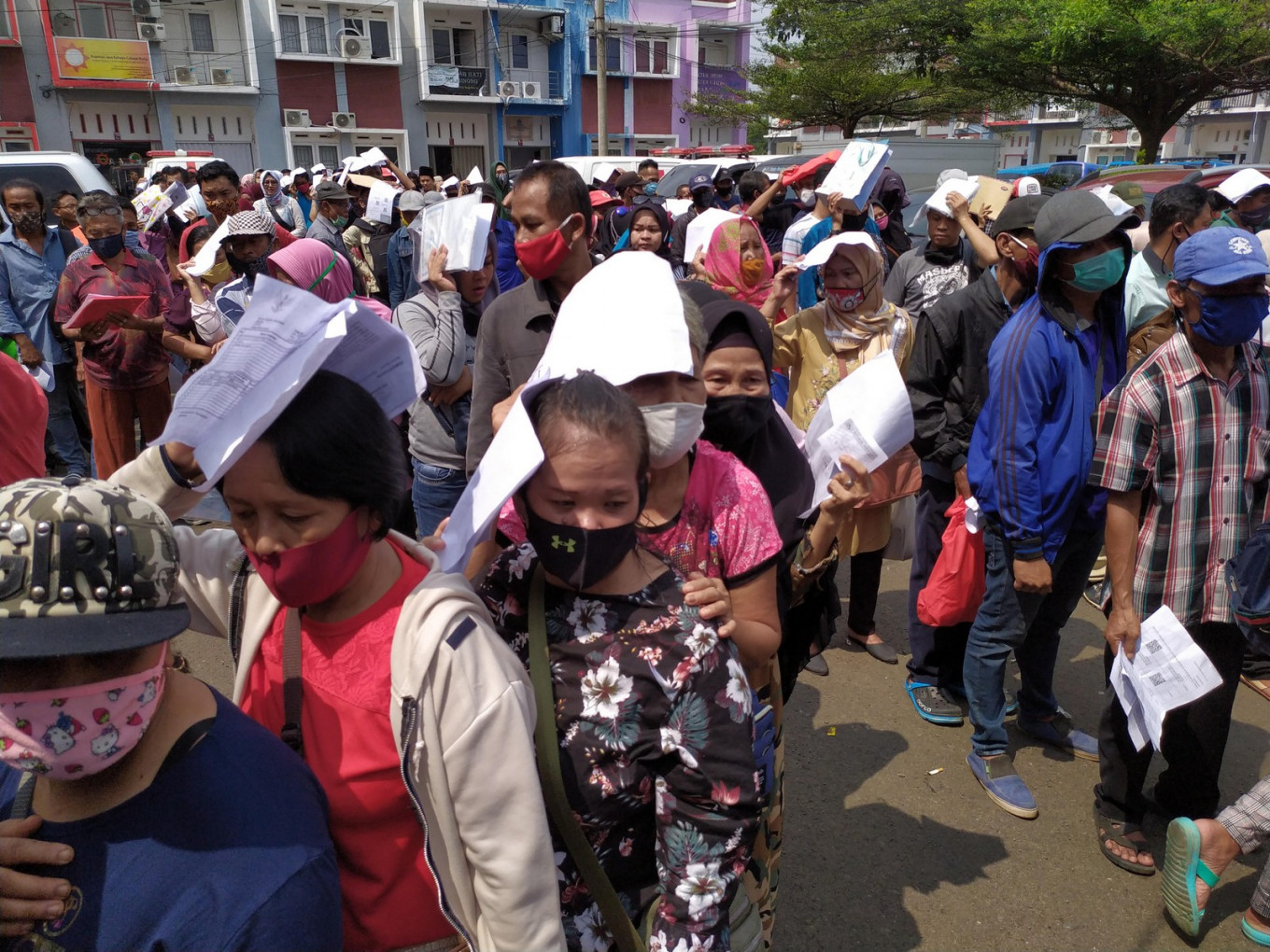Popular Reads
Top Results
Can't find what you're looking for?
View all search resultsPopular Reads
Top Results
Can't find what you're looking for?
View all search resultsStimulating consumption
A larger deficit of, say, up to 7 percent of GDP, would provide badly needed funds to cushion the blow of the health crisis on low-income and laid-off workers.
Change text size
Gift Premium Articles
to Anyone
T
he year 2020 was indeed an extraordinarily hard one. Official data confirm that the economy contracted 2.07 percent, the poverty rate increased from 9.2 percent to slightly over 10 percent and the number of unemployed Indonesians increased from around 7 million to 12 million.
The government has been implementing the correct policy synergy to address the recession caused by the pandemic-induced twin crises of health and economy since last March, tripling the 2020 fiscal deficit to 6 percent of gross domestic product (GDP).
The social assistance budget allocation was doubled this year to Rp 410 trillion (US$28 billion), or 15 percent of the total state budget to support laid-off workers and poor families. Generous tax incentives were provided to micro, small and medium enterprises, the most labor-intensive industry sector.
Bank Indonesia (BI) further eased its money policy last week, cutting the BI 7-day Reverse Repo Rate by 25 basis points (bps) to 3.50 percent, the deposit facility rate by 25 bps to 2.75 percent and the lending facility rate by 25 bps to 4.25 percent. BI also further relaxed its down payment requirements for car loans and mortgages
These measures, along with the massive social safety net and big cuts in luxury car sales tax, comprise a multipronged approach to boost consumption among low- and middle-income Indonesians.
However, the retightened mobility restrictions in Java and Bali due to the persistently high rate of COVID-19 infection over the last two months have increased the downside risks of further weakening expected recovery in private consumption, which accounts for over 55 percent of GDP.
Given the still muted state of the economy, we believe it is premature for the government to lower its 2021 fiscal deficit target by 100 bps to 5 percent. Government spending must play a bigger role in driving domestic consumption because the two other drivers of growth, private consumption and investment, may start recovering significantly only in the second half of the year.
A larger deficit of, say, up to 7 percent of GDP, would provide badly needed funds to cushion the blow of the health crisis on low-income and laid-off workers. The inflation risk is small because the problem is poor demand, not excess demand. In fact, higher demand would help businesses that are mostly running below capacity now to raise their production rate and thereby propel growth.
However, the bulk of additional spending should be allocated for social assistance programs, notably direct cash aid. The rationale is that beneficiary families will spend most of the aid they receive on food and other basic needs. This will increase the incomes of producers and traders in these goods, who will in turn spend money on other goods and services to create a virtuous cycle.
The budget for 2021 could be the final year that the government can provide wide-ranging fiscal stimulus, because the fiscal deficit must be reduced gradually starting in 2022 to restore the 3 percent pre-pandemic deficit cap by 2023 in accordance with Law No.2/2020.










